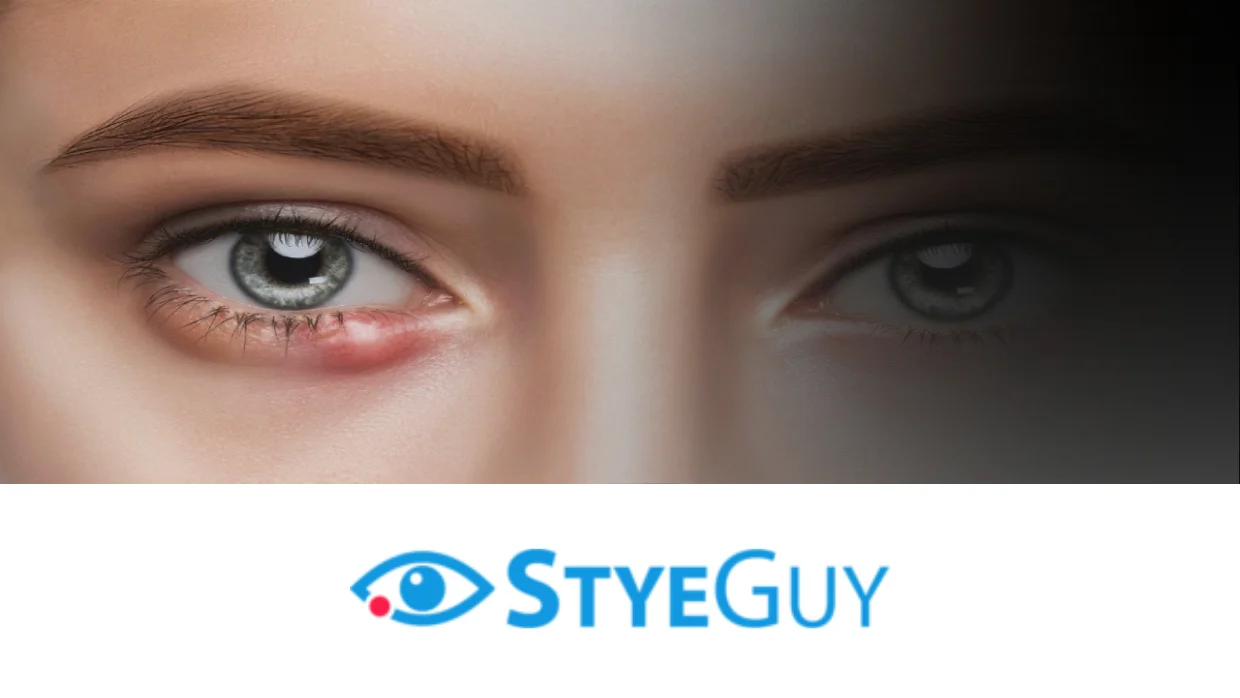
FAQs About Styes
Got a Stye? Don’t fret. Here’s what you need to know.
Your mom and your buddy say they know what to do about your stye… but the StyeGuy actually went to IRL med school..
Frequently Asked Questions
This is the most important question – and yet the most controversial. Ask 5 different eye surgeons how to treat a stye – and you’ll get at least 5 different answers. Doctor Landmann’s approach incorporates two of his core principles: Safety and Aesthetics. Because he is an ophthalmologist that specializes eyelids, his management algorithm has been refined to get rid of your stye as fast as possible, using the safest medical and surgical techniques and provides you with the best aesthetic outcome.
By getting an online consultation with Dr. Landmann, you’ll get detailed information on what your eyelid bump really is – because sometimes it might not even be a stye. Depending on what your individual problem is, he will give you detailed information on how to treat it. If your problem is a stye, he will be able to call in a prescription for you to your local pharmacy instantaneously. If it is something more serious, like eyelid cancer, then he will help you treat it. And if you have any specific questions about your stye, then you’ll also have an opportunity to write out your question and get a detailed response back.
- Do Not try popping it yourself.
- Do Not try tweezing it yourself.
- Do Not stick a needle in it.
- Do not rub gold on it – unless you have too much gold!
- Do Not rub salt on it.
- Do Not rub Vaseline on it.
- Have a fever, feel chills, shivers or have muscle aches
- Your vision is affected more than just a little bit blurred
- You have flashes of light or floaters
- The Stye is on your child, who is 8 years of age or younger
Ahhh, the million dollar question. Ultimately, the answer is – Hopefully FAST.
There is a lot of variability. Some go away in a few hours, some take months or years to go away. Some will never go away unless they are cut out.
If it can go away with an antibiotic drop or pill, then we can call that in for you right away. If it needs to be cut out, we’ll tell you all about the procedure and help get you on the schedule. If we cut it out, it will be gone in about 8 minutes!
- Most important: Keep your eyelids warm. Use a warm compress on a consistent basis. The idea being to liquefy any oily secretions within the glands. Either in the shower by placing your warm hands over your eyelids or with a warm compress.
- Eyelid Hygiene: If you have blepharitis (red, crusty eyelids) then try using Gentle Lid Scrubs.
- Flaxseed Oil: Flaxseed Oil is not only good for your skin, but also helps lessen the chance you will get as many styes in the future. Styes come from glands that make oil. When you take Flaxseed Oil on a consistent basis, the glands make less viscous oil. You can take either the pill form or the powder form.
- Manage Rosacea: Rosacea is a skin disease that causes redness of the eyelids, cheeks, nose, forehead and chin. If you have Rosacea – a dermatologist is best at helping to manage that. In turn, keeping the Rosacea under control will help prevent styes from forming.
- Make sure to clean off your eye makeup every night. Don’t share makeup with friends and throw out any old eye makeup.
- Skin Cancer – can look very similar to a stye. Basal Cell Carcinoma is the most common type of skin cancer that forms on the eyelid.
- Preseptal cellulitis – which is an actual infection of the skin. Typically, the whole eyelid gets red, more painful and swollen.
- Sebaceous cell Carcinoma – this is a very serious and aggressive form of cancer. We worry about this more in older patients who have recurrent Styes on one eyelid.
- Pyogenic Granuloma – this is a deep red and inflamed bump that comes after a patient had a stye.
- Other Growths – such as cysts, nevi and benign lid tumors can all look like styes.
- A Stye is the non-technical term for either a Chalazion or Hordeolum.
- A Hordeolum is a sudden onset infection or abscess.
- A Chalazion is a small area of inflammation. Usually it develops slower and lasts longer.
- Color: Red or skin colored
- Shape: Usually a distinct, round bump near the eyelashes. Sometimes the lid just looks swollen.
- Location: Either the front or back of the eyelid. Upper eyelid or the lower eyelid. Sometimes they are just under the surface and easily seen; Sometimes they are in the middle of the eyelid and can’t be seen, but can be felt. Most commonly, they are near the eyelashes.
- Pain: Usually a dull, uncomfortable tenderness. Sometimes painless though.
- Onset: Usually pretty quick, over the course of a couple hours or days.
- How long they last: Hopefully not very long! But the real answer is, it varies and is unpredictable. Sometimes just a few days.. sometimes for months…
- Effect on vision: A stye should not affect your vision dramatically.
- Age of the patient: Most commonly, these occur in patients less than 40 years old, but they can occur at any age.
Maybe, Maybe Not…These usually come from a blocked tear gland. But, sometimes these do get infected. If you need an antibiotic, we can call one in to your local pharmacy ASAP. If you don’t need an antibiotic, Dr. Landmann will give you detailed information on why not, and what to do instead.

